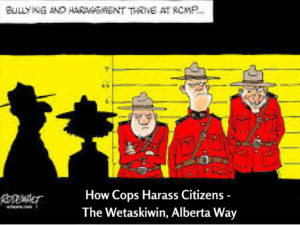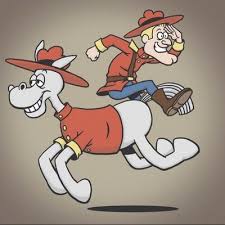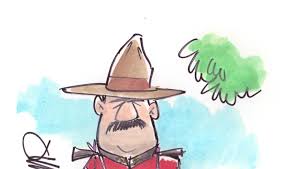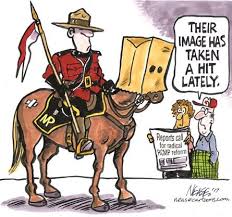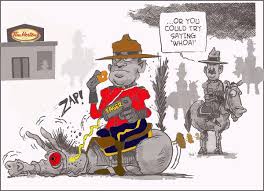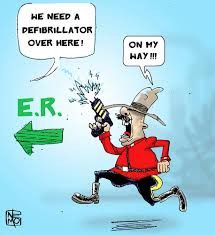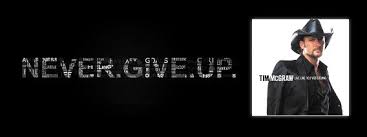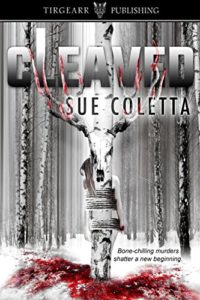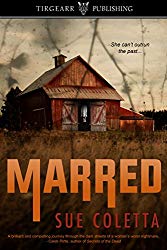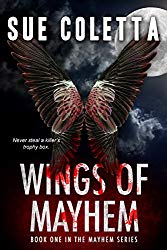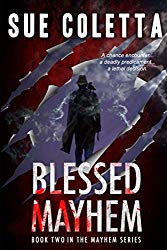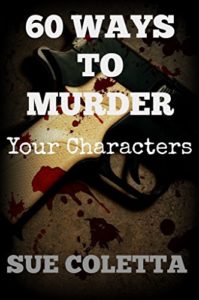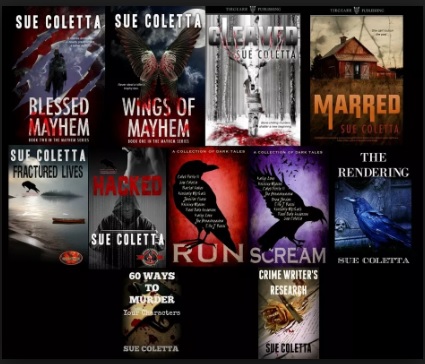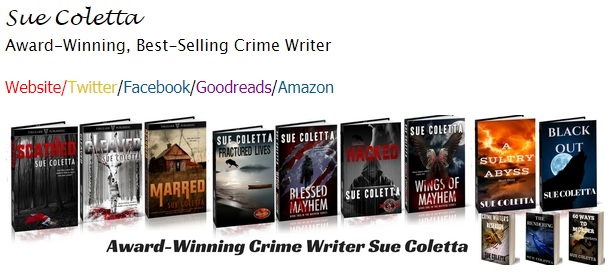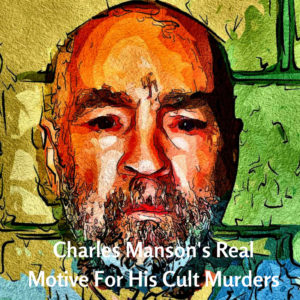 When you read the words “cult” and “murders” in the same line, you’ll evoke evil images of Charles Manson motivating his murderous hippie cult to commit Helter Skelter—an apocalyptic race war between blacks and whites. The picture of wild-eyed Manson with a swastika carved in his forehead, and the sight of his head-shaven girls occupying the courthouse steps, seared themselves into American criminal history. Charles Manson is finally dead, but his memory lives on in villainous infamy. However, Charles Manson’s real motive for his cult murders wasn’t Helter Skelter. That’s bullshit. Pure bullshit. But Manson’s true motive always remained shrouded in secrecy—until now.
When you read the words “cult” and “murders” in the same line, you’ll evoke evil images of Charles Manson motivating his murderous hippie cult to commit Helter Skelter—an apocalyptic race war between blacks and whites. The picture of wild-eyed Manson with a swastika carved in his forehead, and the sight of his head-shaven girls occupying the courthouse steps, seared themselves into American criminal history. Charles Manson is finally dead, but his memory lives on in villainous infamy. However, Charles Manson’s real motive for his cult murders wasn’t Helter Skelter. That’s bullshit. Pure bullshit. But Manson’s true motive always remained shrouded in secrecy—until now.
During the summer of 1969, Charles Manson’s cult of social misfits and rebellious rejects went on a homicidal rampage in the greater Los Angeles area. At least ten innocent victims lost their lives. The high-profile Manson family mass-murders claimed actress Sharon Tate and her celebrity friends who were shot, strangled and stabbed to death. Business people Rosemary and Leno LaBianca fell as well to Manson-ordered, cult-wielding knives. Charles Manson was also directly responsible for three or more individual murders associated with Manson’s criminal enterprise.
 Throughout the Manson Family murder trial, district attorney and prosecutor Vincent Bugliosi pleaded a case that Charles Manson masterminded the Tate and LaBianca murders, although Manson wasn’t hands-on during the killings. Bugliosi argued Manson exercised totalitarian mind control over his cult members and convinced them to commit murder on his behalf.
Throughout the Manson Family murder trial, district attorney and prosecutor Vincent Bugliosi pleaded a case that Charles Manson masterminded the Tate and LaBianca murders, although Manson wasn’t hands-on during the killings. Bugliosi argued Manson exercised totalitarian mind control over his cult members and convinced them to commit murder on his behalf.
Manson’s motive, Bugliosi offered, was Charles Manson proclaimed he was the reincarnation of a Jesus-like messiah who’d rule the world following an inevitable race war between blacks and whites. Manson called this Helter Skelter. Bugliosi’s case rested on the motive theory that Manson organized the Tate and LaBianca murders to frame the Black Panther movement and start his imaginary race Armageddon.
Bugliosi claimed Manson’s convoluted motive was personal gain and control after Helter Skelter occurred. Helter Skelter was a term Charles Manson adopted from the Beatles White Album that Manson claimed described the race war and its fallout. There’s no doubt from the trial evidence that Manson preached Helter Skelter to his cult, and they took it hook, line and sinker. The Helter Skelter motive theory was enough to convince a jury to convict Manson and six family members of first-degree murder, sending them to death row. Their capital sentences were eventually reduced to life in prison where many still remain.
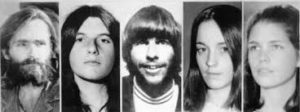 Now, after nearly 50 years, the theory of Charles Manson’s bizarre Helter Skelter motive no longer stands the sniff test. It’s nonsense, and Manson knew it. As a clever and cunning con man, Manson didn’t believe his own bullshit. He had a much different motive for ordering his followers to carry out the Tate and LaBianca slayings. Charles Manson’s real motive for his cult murders was to cover-up another crime.
Now, after nearly 50 years, the theory of Charles Manson’s bizarre Helter Skelter motive no longer stands the sniff test. It’s nonsense, and Manson knew it. As a clever and cunning con man, Manson didn’t believe his own bullshit. He had a much different motive for ordering his followers to carry out the Tate and LaBianca slayings. Charles Manson’s real motive for his cult murders was to cover-up another crime.
Charles Manson’s Criminal Background
If ever there was someone born to be a career criminal, it was Charles Manson. His birth mother was a disturbed teenager from Cincinnati, Ohio. There’s doubt about who Manson’s biological father was, but he took the surname Manson from a man who married his mother while she was still pregnant. The name on his birth certificate was Charles Milles Maddox after his biological mother’s maiden name.
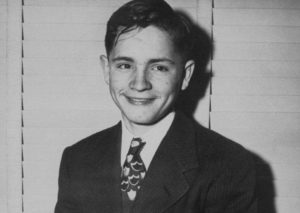 Manson’s mother spent his childhood years revolving in and out of jail. She was a destitute alcoholic, and Manson bounced between her relatives. He relocated to an aunt’s home in Charleston, West Virginia and then to another aunt’s place in Indianapolis. By age ten, Charles Manson was already incorrigible. He was caught breaking into a house and stealing a gun.
Manson’s mother spent his childhood years revolving in and out of jail. She was a destitute alcoholic, and Manson bounced between her relatives. He relocated to an aunt’s home in Charleston, West Virginia and then to another aunt’s place in Indianapolis. By age ten, Charles Manson was already incorrigible. He was caught breaking into a house and stealing a gun.
At twelve, Manson was incarcerated in a Terre Haute, Indiana juvenile delinquent home. He escaped and survived by living on the streets of Indianapolis. Now Manson graduated from break-ins to stealing cars. By his 14th birthday, Charles Manson was sentenced to five years in a Nebraska prison for armed robbery.
Manson had a rough go in the penitentiary. He was a little man with big little-man syndrome. Even as an adult, Charles Manson only stood 5’ 2” and weighed 125 lbs. Much larger prisoners repeatedly raped and sodomized tiny Manson. He developed a defense mechanism that would be a lifelong trademark. Charles Manson pretended to be crazy, and the act worked for him.
Manson got paroled in 1954 and moved to Ohio. Soon, he was back into stealing cars and took one for a ride to Los Angeles. He supported himself through thefts, break-ins and robberies but found time to get a girl pregnant and marry her. Manson also learned to make extra money by pimping-out his new wife.
 In 1956, Charles Manson was back in the federal prison system for another five-year stint. This time he was psychologically evaluated and deemed to aggressively antisocial. His prison IQ test scored 119 with the national average being 100. The shrinks said there was nothing crazy about Charles Manson. In fact, he was quite bright.
In 1956, Charles Manson was back in the federal prison system for another five-year stint. This time he was psychologically evaluated and deemed to aggressively antisocial. His prison IQ test scored 119 with the national average being 100. The shrinks said there was nothing crazy about Charles Manson. In fact, he was quite bright.
Manson conned his way into early parole. He was out by 1958 and practicing a new trade which he’d learned from the pros in prison. Charles Manson began assembling a harem and lived off the avails of prostitution. He’d realized it was easier and safer to get others to commit crimes for him.
But, like other criminal ventures Charles Manson tried, he got caught again when one of the girls turned on him. As well, Manson had been kiting bad checks which was a federal offense. Manson was back in the pen in 1959.—this time for a ten-year sentence.
Manson’s Musical, Scientology and Carnegie Influence
Charles Manson played the prison system well. He used the crazy act when convenient but also took some schooling. Another psychiatric assessment identified Manson’s “tremendous drive to call attention to himself”. By accident or design, Manson was cellmates with the infamous bank robber, Alvin Karpis. It was Karpis who taught Charles Manson to play the guitar.
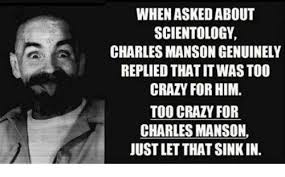 Manson learned several more skills in prison. He became an astute student of Dale Carnegie’s How to Win Friends and Influence People. Manson also studied Scientology. Persuading people and gathering large groups became Charles Manson’s burning desire. His intent upon freedom was to use his musical aptitude, his charm and his con-man conversion skills to gather a female following. Originally, Manson’s game was nothing more than a front for a profitable prostitution ring and a try at building a music audience.
Manson learned several more skills in prison. He became an astute student of Dale Carnegie’s How to Win Friends and Influence People. Manson also studied Scientology. Persuading people and gathering large groups became Charles Manson’s burning desire. His intent upon freedom was to use his musical aptitude, his charm and his con-man conversion skills to gather a female following. Originally, Manson’s game was nothing more than a front for a profitable prostitution ring and a try at building a music audience.
In 1967, Manson made parole again. Now he was in Washington State where he’d been transferred within the federal system. The timing was right for strands of fate to align and begin building Charles Manson’s deadly hippie cult. He moved to San Francisco.
This was the “summer of love” and the peak of the California counter-culture of hippies and freeloaders centered in San Francisco’s Haight-Ashbury district. Many of the hippies were disenchanted girls from broken homes or strict families. The hippie lifestyle of sex, drugs and rock n’ roll was uber-attractive to these vulnerable kids. It was the perfect position for a perverted predator like Charles Manson to exploit.
Manson arrived in San Francisco at the height of the hippie movement. Now, he had two distinct and definite purposes. One was to start a prostitution ring. The other was to build a music career. Manson was smart enough to know he needed a following for both goals. He put his guitar, Carnegie and Scientology skills to work and assembled his family.
The Manson Family Cult Members
Today, most of the main Manson Family members are household names. Everyone knows about Lynette “Squeaky” Fromme who tried to assassinate President Gerald Ford. And, of course, Susan “Sadie” Atkins is well known. So are Patricia Krenwinkel, Leslie Van Houten, Linda Kasabian, Mary Bruner and Diane Lake.
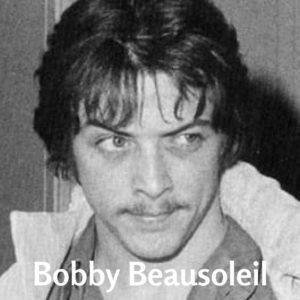 Although Manson’s intention was to build a female following, there were a few young men who joined the family. Noteworthy were Charles “Tex” Watson, Steve “Clem” Grogan, Bruce Davis and a good-looking young guy by the name of Bobby Beausoleil. All four would eventually go down for murders orchestrated by Charles Manson.
Although Manson’s intention was to build a female following, there were a few young men who joined the family. Noteworthy were Charles “Tex” Watson, Steve “Clem” Grogan, Bruce Davis and a good-looking young guy by the name of Bobby Beausoleil. All four would eventually go down for murders orchestrated by Charles Manson.
Looking at the Manson Family objectively, it wasn’t Charles Manson’s original intention to build a cult. His big drive was to be famous through music, and he needed a built-in audience to attract a record label. Manson was fascinated by the Beatles’ success and their music. He intended to follow their path. The cult-thing was an accidental by-product of his grandiose delusion of stardom.
A cult can be either destructive or non-destructive. Generally, a cult is an organization of followers with a charismatic leader who preaches false information. Scientology is clearly a cult, but they don’t seem to go around killing people. The Charles Manson Family did. They were about as destructive a cult as you can find.
You’ve got to give Charles Manson some credit for both drive and balls. While in prison with Karpis, Manson got a lead on a Los Angeles record producer named Phil Kaufman who Karpis knew from the outside. Kaufman was business partners with the influential recording producer, Terry Melcher, who was Doris Day’s son. Melcher was also the producer for big names like the Beach Boys, Crosby, Stills, Nash & Young and the Mommas and Poppas.
 Charles Manson amassed about 100 followers who he plied with psychedelic drugs and mesmerized their strung-out brains with messiah-like preaching about Beatle song interpretations. He gained his audience in San Francisco but knew the music action was in L.A. In 1969, Manson packed up the family and headed south. He tracked down Terry Melcher and talked his way into Melcher’s home at 10050 Cielo Drive in north Los Angeles. This was the home Sharon Tate was about to occupy.
Charles Manson amassed about 100 followers who he plied with psychedelic drugs and mesmerized their strung-out brains with messiah-like preaching about Beatle song interpretations. He gained his audience in San Francisco but knew the music action was in L.A. In 1969, Manson packed up the family and headed south. He tracked down Terry Melcher and talked his way into Melcher’s home at 10050 Cielo Drive in north Los Angeles. This was the home Sharon Tate was about to occupy.
Terry Melcher wasn’t impressed with Manson’s musical talent, but he took an interest in Manson’s personality. Melcher never outright turned Manson down for a record deal. He encouraged Manson to keep writing, practicing and building an audience. Manson took Melcher’s advice to heart, and did just that.
Manson and the Beach Boys
Charles Manson’s big musical break came by total fluke. Dennis Wilson of the Beach Boys picked up two of Manson’s girls who were hitchhiking. Seeing them as an easy sexual mark, Wilson took the girls back to his Los Angeles mansion and had his way. Once the two returned to the family and told Manson about the encounter, Charles Manson saw a tremendous opportunity. He had the audacity to take 20 of his female followers and invade Wilson’s house.
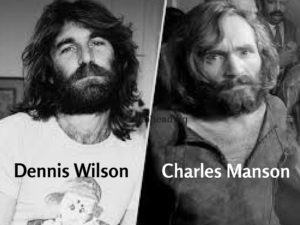 Tempted by unlimited sex, Dennis Wilson let the Manson Family stay until they wore out their welcome a few months later. By then, Manson and his followers sponged tens of thousands of dollars off Wilson and his associates. The Wilson connection gave Manson access to big names like Neil Young who Manson had many jam-sessions with.
Tempted by unlimited sex, Dennis Wilson let the Manson Family stay until they wore out their welcome a few months later. By then, Manson and his followers sponged tens of thousands of dollars off Wilson and his associates. The Wilson connection gave Manson access to big names like Neil Young who Manson had many jam-sessions with.
In the spring of 1969, Manson was going nowhere in his music world and his grip on his cult was loosening. People dropped off and recruiting was slow now that the counter-culture revolution had run its course. Manson wasn’t interested in retaining men, but he did everything to hang onto women. They were still his bread and butter. That continued to work as long as he supplied them with drugs and continued to make them feel valued.
One thing about running a cult is that it’s hard work. It takes a lot of supplies and energy to keep up the charade. Manson constantly needed to take his game to a higher step to retain control. He did this by preaching Helter Skelter, and it worked.
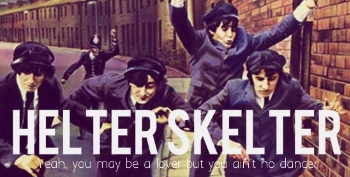 By now, Charles Manson had convinced his hard-core followers that he was a messiah—the “Son of Man”. He played on their fears and hopes where he predicted a race war between blacks and whites where the blacks would kill all the whites and then turn to the Manson Family for leadership. This was all bullshit, of course, and Manson knew it.
By now, Charles Manson had convinced his hard-core followers that he was a messiah—the “Son of Man”. He played on their fears and hopes where he predicted a race war between blacks and whites where the blacks would kill all the whites and then turn to the Manson Family for leadership. This was all bullshit, of course, and Manson knew it.
However, this Helter Skelter nonsense acted as glue for the family and they bought it. To buy time while he pursued other music leads, Charles Manson upped his preaching game. He also upped his LSD and methamphetamine supply. For that, they needed money, and this got Manson in a pickle.
The Start of the Manson Family Murders
After Manson and the family left Dennis Wilson’s place they couch surfed, leaching off whoever would tolerate them. One place was next door to 3301 Waverly Drive in north Los Angeles—the home of Rosemary and Leno LaBianca. After that brief stay, Manson found an old movie set called the Spahn Ranch in the desert northwest of L.A.
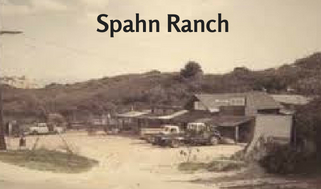 Manson paid his rent to eighty-year-old George Spahn in sexual favors performed by his girls. With this new spot and its remote location, Manson now had more control over who was coming and going in the family. One of the newcomers was a 21-year-old wanna-be musician, Bobby Beausoleil.
Manson paid his rent to eighty-year-old George Spahn in sexual favors performed by his girls. With this new spot and its remote location, Manson now had more control over who was coming and going in the family. One of the newcomers was a 21-year-old wanna-be musician, Bobby Beausoleil.
Charles Manson was under constant pressure to fund his family. It took money to pay for drugs, food and vehicles that the Manson Family required. Most of their money came from prostitution, drug trafficking and petty theft. From that, they barely scraped by. Charles Manson saw an opportunity and hatched a plan for a big money score.
One of Manson’s musical acquaintances was Gary Hinman who was a quiet and well-educated man. Hinman found Manson and his followers interesting but had no desire to join them. Manson heard a rumor that Hinman recently acquired a large inheritance, so Manson sent Bobby Beausoleil and Susan Atkins to check it out.
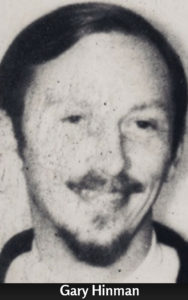 Gary Hinman knew Beausoleil and Atkins. He willingly let them in. Both Atkins and Beausoleil were drugged and unstable. When they approached Hinman to join their family, he again declined. The conversation turned to money, and Hinman put his foot down. It turned ugly. The Manson Family members took Hinman hostage and began torturing him.
Gary Hinman knew Beausoleil and Atkins. He willingly let them in. Both Atkins and Beausoleil were drugged and unstable. When they approached Hinman to join their family, he again declined. The conversation turned to money, and Hinman put his foot down. It turned ugly. The Manson Family members took Hinman hostage and began torturing him.
Beausoleil phoned Manson back at the ranch and told him they weren’t getting anywhere with Hinman. They asked for Manson’s direction. Manson told Atkins and Beausoleil to keep Hinman tied up till he got there. Once Manson arrived, he took over, cutting Hinman’s ear off to set an example.
Hinman still refused to give in. In frustration, Manson took Atkins and left—telling Beausoleil, “You know what to do.” Manson also told Beausoleil to make the scene look like the Black Panthers were involved, reminding Beausoleil of the apocalyptic doom of Helter Skelter.
Bobby Beausoleil took that as a clear signal and authorization from his leader—Charles Manson—to kill Gary Hinman. With Manson gone, Bobby Beausoleil stabbed Hinman to death while Hinman stayed tied to a chair. Beausoleil then wrote “Pig” on the front door in Hinman’s blood as well as leaving a bloody paw print which was the Black Panther symbol.
Beausoleil was drugged, fatigued and not thinking straight. He stole Hinman’s car, hid the knife in the trunk and drove from the scene. Within hours, the police found Bobby Beausoleil asleep in Hinman’s stolen car. His clothes were bloody and so was the murder weapon still in the trunk. The police backtracked, found Hinman’s body and charged Bobby Beausoleil with first-degree murder.
Charles Manson Plans the Tate & LaBianca Murders
Beausoleil’s arrest worried Charles Manson. He was concerned—really concerned—that Bobby Beausoleil would crack, squeal and implicate Charles Manson as a murder accomplice. That got the wheels turning in Manson’s head, and his convoluted logic kicked in.
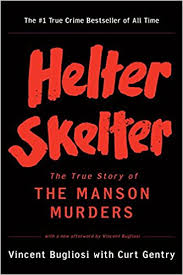 Charles Manson calculated that if similar murders occurred with a modus operandi (MO) like what Beausoleil did to Hinman, then the police would have to conclude the real killers were still out there. Therefore, they’d have to drop the charges, release Bobby Beausoleil and the heat would be off Charles Manson.
Charles Manson calculated that if similar murders occurred with a modus operandi (MO) like what Beausoleil did to Hinman, then the police would have to conclude the real killers were still out there. Therefore, they’d have to drop the charges, release Bobby Beausoleil and the heat would be off Charles Manson.
Manson figured he’d put his other family members to work by casing out locations and finding suitable murder victims. He knew he could convince his most-trusted lieutenants who accepted his Helter Skelter prophesies. Manson gathered them and said it was now time to start Helter Skelter. He said nothing about covering up the botched Gary Hinman murder.
The first place Manson targeted was 10050 Cielo Drive. Manson knew Terry Melcher moved out. In fact, Manson came face-to-face with Sharon Tate when he went looking for Melcher one day. Manson picked Tate’s residence for two reasons. One was he knew that celebrity murders would get a lot of attention. Secondly, Manson was familiar with the layout.
On the night of August 8, 1969 Charles Manson instructed Tex Watson to take Susan Atkins, Patricia Krenwinkel and Linda Kasabian and kill everyone inside 10050 Ceilo Drive. Manson also directed them to make the scene look like a Black Panther attack by writing bloody messages on the walls. He implicitly said this was the start of Helter Skelter and it was their privilege to carry it out.
 The drug-fueled cult members bought every word of it. Without going into graphic details, the Manson Family members cold-bloodedly killed Sharon Tate, Jay Sebring, Abagail Folger, Voytec Frykowski and an innocent visitor named Steve Parent.
The drug-fueled cult members bought every word of it. Without going into graphic details, the Manson Family members cold-bloodedly killed Sharon Tate, Jay Sebring, Abagail Folger, Voytec Frykowski and an innocent visitor named Steve Parent.
One mass killing wasn’t good enough for Charles Manson. The next night, Manson accompanied the same murderous group to the LaBianca house on Waverly Drive. This time he took along Leslie Van Houten and Clem Grogan. Again, Manson didn’t get his hands bloody. He picked the LaBianca home simply because he knew the layout and that they were wealthy. Once Manson located the home, he left and the Manson Family cult members went in for the kill.
 Bit by bit, Manson’s grip on his cult slipped away. It took a while for the police to connect the Tate and LaBianca murders and find evidence linking the Manson cult to the crimes. Even when the police raided the Spahn Ranch and arrested Manson and his remaining followers on car theft suspicion, they failed to make any connection to the August murder spree. It wasn’t until Susan Atkins opened her mouth in jail that the cat came out of the bag.
Bit by bit, Manson’s grip on his cult slipped away. It took a while for the police to connect the Tate and LaBianca murders and find evidence linking the Manson cult to the crimes. Even when the police raided the Spahn Ranch and arrested Manson and his remaining followers on car theft suspicion, they failed to make any connection to the August murder spree. It wasn’t until Susan Atkins opened her mouth in jail that the cat came out of the bag.
Many of the Manson Family members testified at the Tate and LaBianca murder trials. Each one attributed the motive to Charles Manson’s Helter Skelter vision. One can’t blame them for revealing this as the motive because that’s what they honestly believed. Only Charles Manson knew his real motive for his cult killings. That’s a secret Manson took to the grave with him.
* * *
I’m not making up this theory about Charles Manson’s real motive for his cult murders. Vincent Bugliosi is on the record for purporting the Gary Hinman murder connection as the real reason why Manson ordered the Tate and LiBianca “copy-cat” killings. It makes sense when you think about it.
 Charles Manson was a psychopath, but he wasn’t psychotic. He was a shrewd little con-man and a calculating criminal. His entire MO was using people to commit criminal acts, and his cult following—which was supposed to be a Beatles-like fan club—got carried away into one of the most notorious murder cases in history. It was all about covering up a crime gone bad.
Charles Manson was a psychopath, but he wasn’t psychotic. He was a shrewd little con-man and a calculating criminal. His entire MO was using people to commit criminal acts, and his cult following—which was supposed to be a Beatles-like fan club—got carried away into one of the most notorious murder cases in history. It was all about covering up a crime gone bad.
If you’re interested in a fascinating look at how Charles Manson built and controlled his cult, I suggest reading a 2015 undergraduate honors thesis by Robin Altman of the University of Colorado, Boulder. It’s titled Sympathy for the Devil: Charles Manson’s Exploitation of California’s 1960 Counter-Culture. It also concludes Manson’s motive for the Tate & LaBianca murders was to cover up Bobby Beausoleil’s blotched job and isolate Manson.

